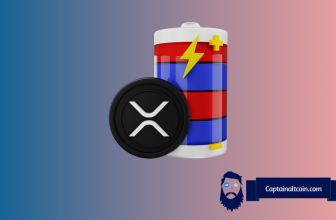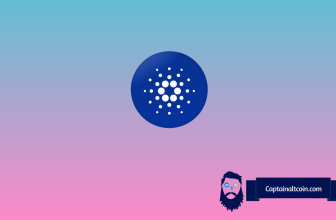
Polygon features among the top ten DeFi protocols in the world measured in terms of TVL or total value locked. In a short period, the total value locked in Polygon has crossed US$4.7 billion. Symbiosis Finance, the aggregator of decentralized exchange liquidity across all EVM compatible blockchains, has integrated into Polygon in its bid to connect every chain that has earned enough market traction.
As a decentralized multi-chain liquidity ecosystem, Symbiosis Finance helps swap any token between all chains without asking the users to give up the custody of their funds. While we will look at how the Symbiosis-Polygon integration works on Symbiosis’ testnet in a later segment, it is crucial to understand why the inclusion of Polygon is special.
What you'll learn 👉
Polygon: Ethereum’s Internet of Blockchains
While Symbiosis is the DEX liquidity aggregator across all EVM-compatible blockchains, Polygon provides the protocol and framework for building and connecting Ethereum-compatible blockchain networks. It helps aggregate scalable solutions on Ethereum and supports the evolution of a true multi-chain Ethereum ecosystem.
The ways Polygon helps solve bottlenecks related to blockchains are multiple. In short, it reduces Ethereum’s high gas fees and slow speeds. Yet, it does not compromise the security of the chain. Polygon wins over other similar multi-chain systems, like Polkadot, Cosmos, and Avalanche, by leveraging Ethereum’s network effects fully. Apart from being inherently more secure than its competitor solutions, Polygon is also more open and powerful.
As the preferred development platform for most blockchain developers, Ethereum’s importance to the DeFi system is undeniable. Yet, it suffers from the limitations of low throughput, poor user experience, and zero sovereignty. With Polygon, developers can reverse many of these development headwinds. For instance, with Polygon, it is possible to have one-click deployment of preset blockchain networks. With the growing number of custom networks, Polygon keeps expanding its set of modules. Polygon’s interoperability protocol helps exchange arbitrary messages with Ethereum and other blockchain networks. It also has the provision for the modular and optional “security as a service”.
The Ethereum-compatibility of Polygon, with its established tech stack tools, languages, standards, and enterprise adoption, helps it stay ahead in the industry. Its dedicated blockchains, scalable consensus algorithms, and custom wasm execution environments equip it with unmatched scalability. It also leads in both the areas of user and developer experience. While its UX is comparable to Web2, the developer experience standards are comparable to Ethereum. It can conduct “zero-gas” transactions with instant transaction finality, whereas for developers, Polygon asks for no protocol level knowledge, token deposits, fees, or permissions. Finally, Polygon’s modularity empowers it with high customizability, extensibility, and upgradeability. Its time-to-market requirements are short, while community collaboration qualities are robust.
Owing to all these features cited above, the Polygon PoS has more than 3,000 decentralized applications live on it. A diversified team of contributors spread across the globe has helped build the open-source project and take it to the level where it is today.
How to Use Symbiosis Integration Into the Polygon Network?
To leverage the integration, users now need to go to the testnet and select any coin on any supported network. The next step is to choose any token on Polygon and make the swap. The testnet has been tested thoroughly to verify the stability and speed of the network under all kinds of circumstances, especially when the user number is surging.
To use the Symbiosis app testnet, one first needs to connect to the MetaMask wallet. From the list of available networks, one has to then choose the Rinkeby Testnet. The third step is to start selecting the assets one wants to swap. There are many available. One has to click on the ones one wants to swap and specify the amount.
While the application carries out the process, to help its users make an informed choice, the system shows crucial parameter values like the slippage tolerance, route price impact, and meta router fees.
Once the user confirms the transaction within the MetaMask wallet, it takes a while for the transaction to confirm. It usually takes around a minute. While waiting for the swap transaction to mine, the user can see all the actions that the application carries out for the user.
Amplifying the Benefits of Symbiosis Finance
The coming together of Polygon and Symbiosis amplifies the benefits of Symbiosis’ multi-chain liquidity ecosystem. The more chains the Symbiosis platform connects with the more robust its ecosystem becomes. As a multi-chain decentralized liquidity ecosystem, you can leverage Symbiosis to swap to any token. And, the inclusion of Polygon further expands that list. Moreover, while doing all this, you do not need to give up the custody of your funds.
The Symbiosis Finance solution is a simple one to use. You do not need to have additional wallets or go through a long waiting time or take additional steps to conduct the swap. Full decentralization implies that it is beyond the reach of any central party to stop the protocol or censor users from accessing it. Symbiosis keeps adding token pairs to make it as wide-reaching as possible. The cross-chain liquidity potential is practically limitless.
Symbiosis constantly monitors the best exchange rates for these trading pairs in real-time. One can discover the most efficient trade route without getting lost in multiple applications. Moreover, it does not require any special software and offers best-in-class security for the trustless non-custodial system with the Threshold Signature Scheme and Multi-Party Signature models. Anyone can become a relayer on Symbiosis and all relayers’ network community-driven nodes have bonded tokens at stake to process swaps.
Overall, the addition of Polygon expands Symbiosis’ range and strengthens its Ethereum capabilities.







